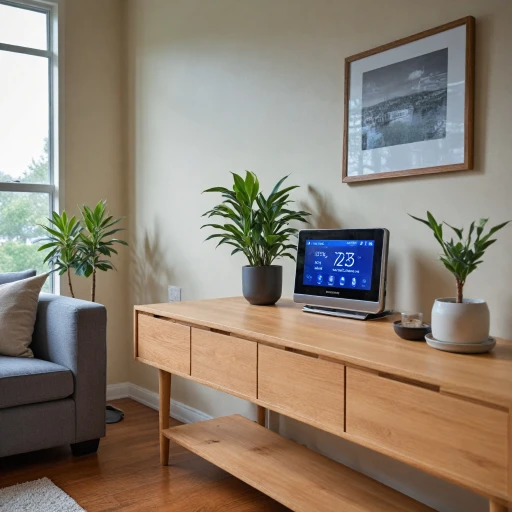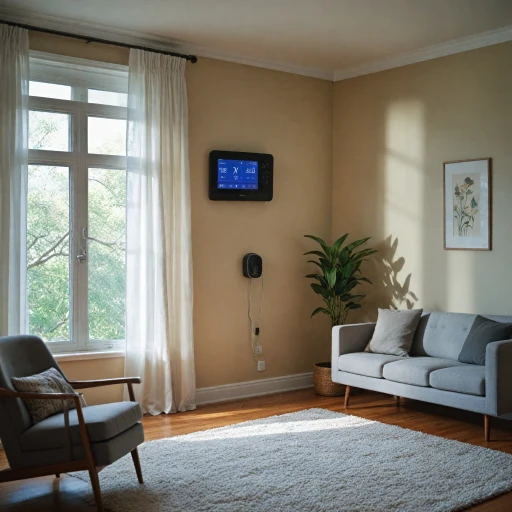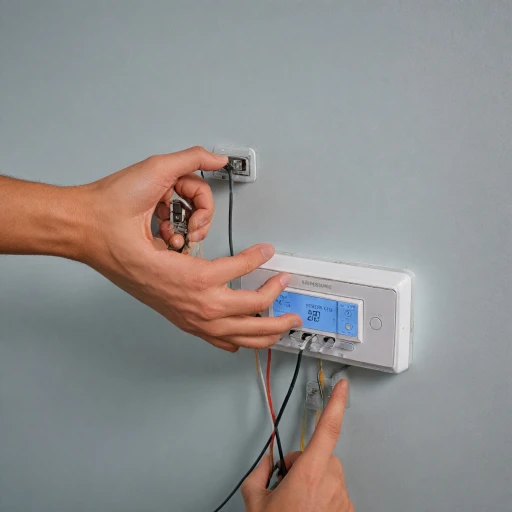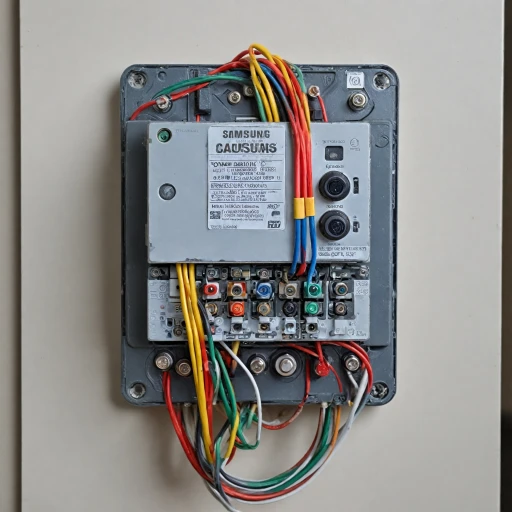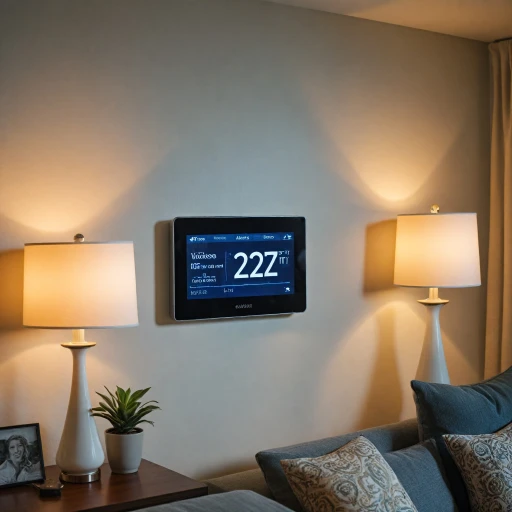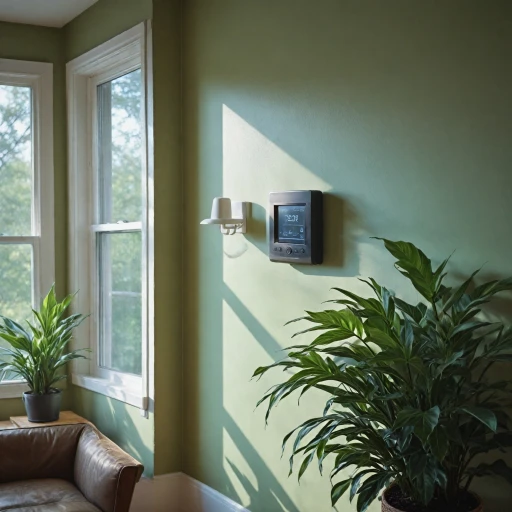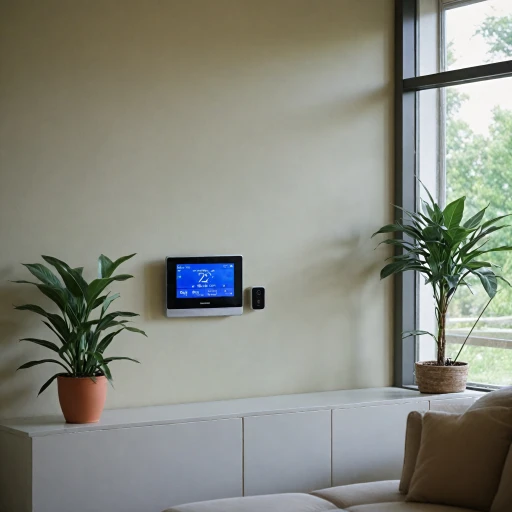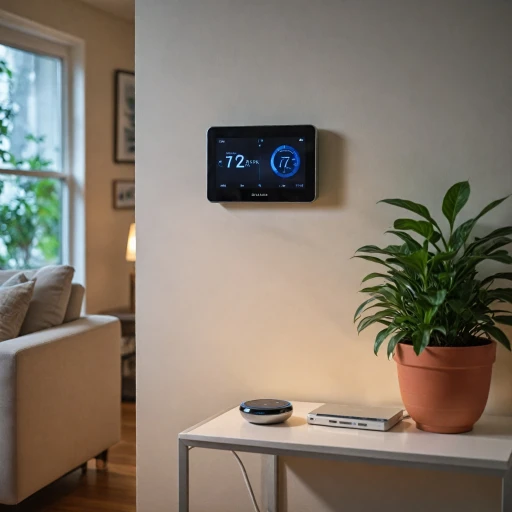
Understanding the Basics of RV Thermostat Upgrades
Diving into RV Thermostat Fundamentals
When considering an upgrade for your RV's thermostat, it is essential to grasp the fundamentals that guide you through the various aspects of this process. RV thermostats come in an array of options including digital, analog, and smart models, each offering varying levels of comfort control and functionality. Understanding the distinctions between these models will assist in making an informed decision tailored to your needs. Smart thermostats have gained substantial attention for their potential to transform the way you control the air conditions inside your RV. They elegantly balance the ease of technology with robust inventory management capabilities, providing you control over temperature settings with precision and charm. Wi-Fi and Bluetooth-enabled models, such as the Micro Air and EasyTouch thermostat, offer unparalleled convenience and remote control abilities. For those still relying on old-school versions like the analog thermostat, shifting to a digital thermostat or even an advanced product with Wi-Fi Bluetooth capabilities could significantly enhance your RV experience. The challenge lies in selecting the right thermostat, considering compatibility, and price. Brands like Dometic offer a range of RV-compatible models, including the Dometic Single Zone and Dometic Comfort Control, which can be excellent choices for replacement. Each model brings unique advantages and functionality—it's just a matter of aligning your desires with the right product. Choosing the right model is just the start. The practical details surrounding the installation and maximizing the efficiency of the replaced thermostat are crucial considerations. There are hurdles, but understanding these intricacies paves the way for a smooth transition toward a more comfortable and efficient RV climate control system.Benefits of Smart Thermostats in RVs
The Perks of Smart RV Thermostats
Upgrading to a smart thermostat in your RV can offer a multitude of advantages that enhance comfort and convenience. Modern models, like the EasyTouch thermostat or various digital thermostats, bring smart technology to your mobile living space, simplifying climate management. These thermostats allow you to control the RV's temperature settings with needful precision. Digital and micro-air models come equipped with Bluetooth and WiFi integration, providing the flexibility to adjust the temperature remotely from your phone. This is especially useful for maintaining ideal temperatures before you even set foot in your RV after a day of exploration. Furthermore, smart models often support multiple zones if your RV comes equipped with more than one air conditioner. Single-zone thermostats are popular, but multi-zone capabilities allow personalized control over different sections of your vehicle, ensuring everyone onboard enjoys their desired temperature. Another benefit is the ease of use these products bring. Unlike the often complicated settings of older analog thermostats, the user-friendly interfaces of digital models streamline comfort control. For instance, brands like Dometic and Coleman Mach provide high-quality, user-friendly digital thermostats that make RV climate control straightforward. Price efficiency is another consideration. While smart thermostats generally cost more upfront than an analog wall thermostat or a Dometic Duotherm analog, they can lead to energy savings over time by optimizing heating and cooling cycles. This could be a boon to those looking to manage inventory management of resources whilst on the road. Ultimately, a smart thermostat is not simply a replacement for your current RV's heating and cooling control system; it's an upgrade that offers numerous advantages in terms of technology, efficiency, and comfort.Challenges in Upgrading RV Thermostats
Navigating the Complexities of RV Thermostat Upgrades
Activating the benefits of a smart thermostat in your RV setup can present a unique set of challenges. To ensure the process is smooth and efficient, it's important to be aware of certain factors that could impact the success of your upgrade. While the benefits of smart thermostats such as enhanced temperature control and improved comfort levels are appealing, addressing issues related to compatibility, installation, and product selection is critical.
One of the primary challenges to consider is compatibility with existing systems. Established RVs might come with different models like Dometic single zone or analog thermostats that require specific replacement solutions. Upgrading to an advanced model such as a digital thermostat or a micro air EasyTouch thermostat can demand thorough research on the compatibility with your existing system.
Installation Complexity: While some digital thermostats are plug-and-play, others may necessitate a more meticulous installation process. Understanding your RV's wiring is crucial; referring to resources like a furnace thermostat wiring diagram can be immensely helpful.
Price and Product Selection: Your choice of thermostat involves balancing cost with features. Models such as the Dometic Comfort Control and Coleman Mach thermostats offer varied functionalities ranging from WiFi and Bluetooth connectivity to zone control features. However, their prices can greatly differ based on the model and features they offer. Keeping an organized inventory management approach can assist in making the right decision.
It’s also worth noting the availability of replacement parts and support. Popular brands such as Dometic and micro air have extensive support networks, ensuring that if any issues occur, there are resources and services available to address them.
Learning about the potential challenges in upgrading your RV’s thermostat allows for a more thoughtful and prepared approach, ensuring that the transition to a smart thermostat enhances your RV experience significantly.
Comparing Popular Smart Thermostat Models for RVs
Leading Models for Your RV Thermostat Upgrade
When considering upgrading your RV's climate control system, it's crucial to compare popular smart thermostat models to find one that meets your needs. From enhanced temperature regulation to seamless connectivity, each product comes with unique features that can enhance your RV experience.Dometic Models: Your Reliable Partner
Dometic is a renowned name in RV climate control, offering a range of models such as the Dometic Single Zone and Dometic Comfort Control. With options for both digital and analog thermostats, Dometic provides flexibility for those interested in a straightforward analog transition or a more advanced digital upgrade.- Dometic Single Zone: Ideal for smaller RVs, it's known for its simplistic design and ease of use. A good fit if cost-effectiveness is a priority.
- Dometic Comfort Control: Offers comprehensive control over your air conditioning system, often integrated in dual zone setups for larger RVs needing customized climate settings.
- Dometic Duotherm: Available as both digital and analog versions, this model is appreciated for its precise temperature control and reliable performance.
The Innovation of the EasyTouch Thermostats
EasyTouch has emerged as a frontrunner in the smart thermostat realm. Its digital interface makes it a breeze to manage the climate in your RV, even while on the go. The EasyTouch thermostat offers options such as WiFi and Bluetooth connectivity, allowing users to control and monitor temperatures remotely using a smartphone.- EasyTouch RV: With its sleek black or white design, it complements modern RV décor while offering high-tech features like precise climate control and zonal settings.
- Micro Air EasyTouch: Known for its integration and compatibility with various air conditioning units, this model makes the transition from traditional setups smooth.
Finding Your Perfect Model: Coleman Mach Options
For those who value variety and innovation, Coleman Mach provides dependable wall thermostats suitable for RV environments. Their zone thermostats are tailored for RVers who need to regulate multiple air conditioning units, facilitating a comfortable atmosphere regardless of the external weather conditions.- Coleman Mach Digital Thermostat: These provide precise control with digital readouts, simplifying the adjustment of settings.
- Coleman Mach Analog Thermostat: For those preferring a no-frills approach, these thermostats offer robust performance with simplistic operation.
Installation Tips for RV Thermostat Upgrades
Steps to Successfully Install a Smart Thermostat in Your RV
Before you dive into the installation process, ensuring you have the necessary tools and a clear understanding of your existing system is crucial. Here's how you can streamline the installation:- Assess Your Existing Thermostat Setup
- Examine whether you have a digital or analog thermostat like the dometic duotherm or wall thermostat. Knowing your current model will help you choose the appropriate smart thermostat replacement.
- Pay attention to whether your existing thermostat controls a single zone or multiple zones in your RV.
- Selecting the Right Product
- Popular models, such as the EasyTouch thermostat or micro air EasyTouch, are known for their compatibility with various RV systems.
- Consider features like wifi, bluetooth capabilities, and multi-zone control, which add convenience and flexibility.
- Take inventory management into account to ensure the model you select fits within your budget and availability.
- Prepare for the Installation
- Turn off the power to the HVAC system to ensure safety. This step is vital before you handle wiring connections.
- Remove your current thermostat with care. If it's an older model, such as an analog thermostat or dometic single zone unit, note the wiring setup for your reference.
- Position and Wiring
- Install the new base plate if included, making sure it aligns correctly with the existing screw holes.
- Connect the wires to their corresponding terminals, following the color-coding; check the manual supplied with your new smart thermostat. With models like the Dometic Comfort Control, the wiring involves attention to zones.
- Final Installation Steps
- Attach your new smart thermostat to the wall and ensure it is secure.
- Restore power to your HVAC system and configure your thermostat settings via the screen or smart app, depending on your exact model.
- Test System Functionality
- Check if the thermostat is controlling your air conditioner and any heating elements efficiently. Adjust the temperature settings between cool and heat modes to verify function.


